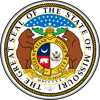
 Missouri
Missouri
Missouri has one of the strongest tax and expenditure limits in the country. In 1980, Missouri voters approved Amendment 5, known as the Handcock Amendment, to the Missouri Constitution and enacted one of the most stringent TELs of any state. Central to the Hancock Amendment is a limit on state revenue growth equal to the growth in Missouri personal income. If state revenue exceeds this limit by more than 1%, Missouri income taxpayers are entitled to a tax refund. Like TABOR in Colorado, it applies to both state and local governments.
The Hancock Amendment also limits the Missouri government’s ability to override the revenue limitation. If lawmakers want to raise taxes by more than the percentage growth in state income, they must seek approval from voters. The Hancock Amendment also restricts legislators from creating unfunded mandates on localities. Ensuring new mandates to localities are funded prevents lawmakers from avoiding the de facto expenditure limitation created by the state’s balanced budget amendment. Finally, the Hancock Amendment also gives legal standing to any taxpayer if the taxpayer wishes to enforce the Hancock Amendment through a lawsuit.
The Hancock Amendment also applies to localities. Missouri local governments are held to the same tax limitation and required voter approval for tax increases as the state government. Since local governments receive most of their income from property taxes, the Hancock Amendment adjusts slightly to fit this different revenue stream. If the sum of assessed property values within a locality exceeds the growth in consumer price index (CPI), except for new construction and improvements, then the locality-wide property tax rate must be rolled back to equal the previous tax year’s liability. This limitation on localities is key, because TELs that exclude local governments can allow localities to raise taxes and increase spending indiscriminately.
| Year | Inflation-adjusted Actual Spending |
|---|---|
| 1992 | 12,144,740,000 |
| 1993 | 12,750,170,000 |
| 1994 | 13,448,750,000 |
| 1995 | 14,710,100,000 |
| 1996 | 15,816,900,000 |
| 1997 | 16,355,990,000 |
| 1998 | 16,791,990,000 |
| 1999 | 17,560,410,000 |
| 2000 | 17,469,000,000 |
| 2001 | 16,027,880,000 |
| 2002 | 17,064,000,000 |
| 2003 | 16,695,810,000 |
| 2004 | 17,664,780,000 |
| 2005 | 18,113,270,000 |
| 2006 | 18,112,000,000 |
| 2007 | 19,593,750,000 |
| 2008 | 18,960,000,000 |
| 2009 | 19,048,790,000 |
| 2010 | 17,431,000,000 |
| 2011 | 17,591,550,000 |
| 2012 | 17,882,250,000 |
| 2013 | 17,464,010,000 |
| 2014 | 17,385,500,000 |
| 2015 | 18,096,890,000 |
| 2016 | 18,307,530,000 |
| 2017 | 18,405,840,000 |
| 2018 | 18,208,340,000 |
| 2019 | 18,092,130,000 |
| 2020 | 17,699,000,000 |